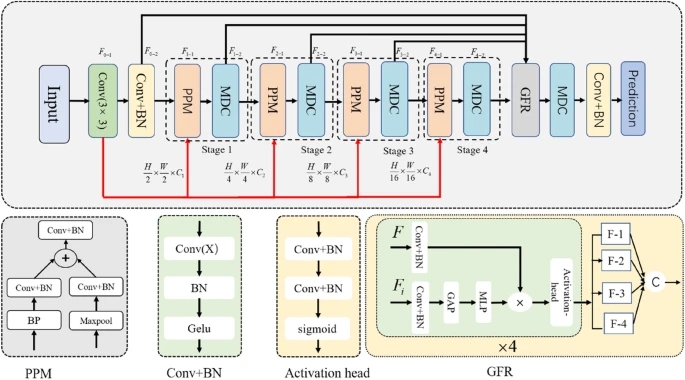Journal of Bionic Engineering (2024) 21:1511–1521 https://doi.org/10.1007/s42235-024-00513-7
Rethinking the Encoder–decoder Structure in Medical Image Segmentation from Releasing Decoder Structure
Jiajia Ni1,2 · Wei Mu2 · An Pan2 · Zhengming Chen2
1 School of Artifcial Intelligence, Anhui Polytechnic University, Wuhu 241000, China
2 School of Information Science and Engineering, HoHai University, Changzhou 213000, China
Abstract
Medical image segmentation has witnessed rapid advancements with the emergence of encoder–decoder based methods. In the encoder–decoder structure, the primary goal of the decoding phase is not only to restore feature map resolution, but also to mitigate the loss of feature information incurred during the encoding phase. However, this approach gives rise to a challenge: multiple up-sampling operations in the decoder segment result in the loss of feature information. To address this challenge, we propose a novel network that removes the decoding structure to reduce feature information loss (CBL-Net). In particular, we introduce a Parallel Pooling Module (PPM) to counteract the feature information loss stemming from conventional and pooling operations during the encoding stage. Furthermore, we incorporate a Multiplexed Dilation Convolution (MDC) module to expand the network's receptive feld. Also, although we have removed the decoding stage, we still need to recover the feature map resolution. Therefore, we introduced the Global Feature Recovery (GFR) module. It uses attention mechanism for the image feature map resolution recovery, which can efectively reduce the loss of feature information. We conduct extensive experimental evaluations on three publicly available medical image segmentation datasets: DRIVE, CHASEDB and MoNuSeg datasets. Experimental results show that our proposed network outperforms state-of-the-art methods in medical image segmentation. In addition, it achieves higher efciency than the current network of coding and decoding structures by eliminating the decoding component.
Keywords Medical image segmentation · Encoder–decoder architecture · Attention mechanisms · Releasing decoder architecture · Neural network

Copyright © 2025 International Society of Bionic Engineering All Rights Reserved
吉ICP备11002416号-1









